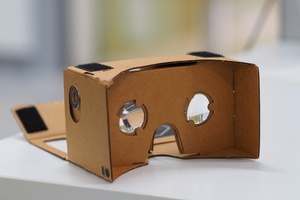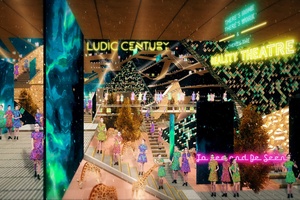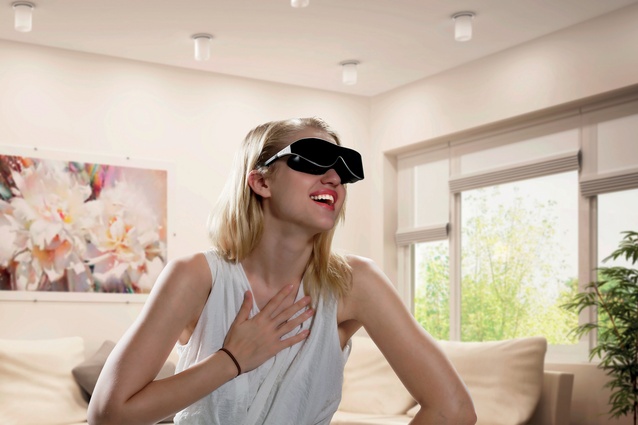Watch this space
Lynne Elvins explores the seemingly unlikely connection between virtual reality and interiors.
After many years of hype, Virtual Reality (VR) is on all the ‘top-trends’ lists for 2016. So, where are we in terms of realising its capabilities and how might this affect the design industry and, more specifically, interior design?
VR is most popular within the gaming and entertainment industry. Forthcoming games like EVE: Valkyrie have been designed for use with VR headset technology such as Facebook’s Oculus Rift or Sony’s PlayStation VR. The reviewers struggle to describe the experience adequately, but many found it “breathtaking”.
What may, or may not, become so popular is the furniture designed to enhance the VR gaming experience. Roto, for example, is a rotating chair that will spin with the action yet doesn’t tangle you in wires or require you to rotate the simulation. But Roto, along with other examples, is only for pre-order or still awaiting crowdfunding investment.

In the meantime, Google Cardboard is a lower-cost platform for VR and Augmented Reality (AR) applications. Users can download an app to their phone and slot it into a cardboard headset viewer. Launched in 2014, by January this year over five million Cardboard viewers had been shipped and more than 1,000 applications had been published. They include options to capture your own 360-degree environments; experience places from around the world; and of course the inevitable roller coaster ride simulators so you can laugh at your friends while they sway around unsteadily.
However, there are more serious uses where VR is being applied. As an immersive storytelling tool, people can design VR environments to be user experiences like no other. Students in San Francisco were the first to use Nearpod VR lesson plans. Teachers can send classes on over 25 virtual field-trip lessons that offer first-person tours of the ancient pyramids of Egypt, the caves on Easter Island, the marine biomes of the Great Barrier Reef, Mars, patriotic landmarks across the US, and the tallest buildings in the world in Dubai. It’s becoming clear that 360-degree immersive learning could revolutionise education.
Transporting people to virtual places is where the interior design industry has an obvious use for VR within projects. The ability to take clients into spaces before they are physically built is a service that some companies are already offering.
Headquartered in Canada, interior construction company DIRTT is using Oculus Rift headsets to show clients exactly what their projects will look like before construction has even begun. The company designed a wireless set-up with a backpack that allows clients to walk around freely and experience everything from the layout of the furniture to the location of the columns and windows.
In a similar way, companies in the furniture retail industry are already using AR tools to let buyers ‘place’ furniture in existing spaces. It can reduce the need for physical prototypes and give access to an entire showroom of 3D product models. Based in Oslo, Northern Lighting links its 2D catalogue to its virtual product showroom enabling customers to try all of the lamps in scale from the comfort of their own homes.

But VR capabilities may also replace some physical spaces. As increasing numbers of high-street stores are closing because of online shopping, in the future it could be an entirely virtual process.
To explore this, British designer Allison Crank imagined a VR shopping centre that not only allows users to browse but also to commission bespoke products. Crank’s “Reality Theatre” thesis sees purchasing turned into performances. Because consumers can change their products, they become designers.
In this way, Crank considers that designers in the future will no longer create what they think people want, but will become facilitators – guiding with their expertise and taste, then having virtual spaces where anyone can create their personal environment.
It’s to be hoped that VR will expand not only as an entertainment platform and another way to shop; its ability to unlock imaginations and connect people across the globe has the potential to also inspire and change us. And this aspect is the most unknown. If we use these technologies to trick our brains into thinking that experiences and spaces are real, how will this affect us?
VR can cause nausea, eye strain and headaches. But it is the psychological unknowns that are prompting some people to call for setting standards in relation to content. Others argue that all new technologies have the potential to be used or abused; so, regardless of any potential downsides, VR is looking set for mainstream success.










